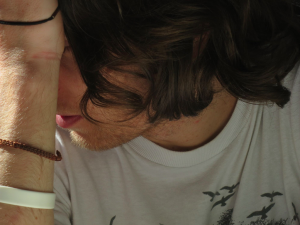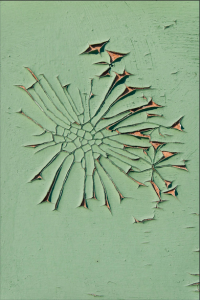Monday
Arts and PoetryWhat is Miksang Really?
article by Julie DuBose, Director of Miksang Institute
photos by students of the Miksang Institute
There are many people these days that feel a connection to contemplative photography, and it can be confusing and difficult for the aspiring contemplative photographer to clarify the method, the motivation, and measure of what we see and do within this path. There are a number of different strains of contemplative photography, and there are myriad versions of what this means. As a teacher of Miksang, I am going to talk about the Miksang way of practicing contemplative photography. Miksang comes from the inherited and transmitted wisdom of non-conceptual experience given to us by our teachers.
Because of the popularity of the contemplative approach to photography, there exists a tremendous pull to systematize, dogmatize, and basically take proprietary ownership of the inherent freshness within this approach. From this fundamentally uncreative urge, new schools no doubt will arise which easily identify and judge according to standards enforced by teachers with checklists. This process has repeated itself endlessly within academic circles and wherever genuine insight has given way to conceptual understanding.
This is not what we hope for. The basis of Miksang is openness and absence of conceptual overlay. The tendency to use concept to describe openness is natural as long as we don’t lose the connection to the fundamental experience we are describing as we talk about Miksang.Lately I have been looking through the various Miksang postings on the internet, and there seems to be a lack of clarity about what Miksang is and how you can spot a really successful Miksang image. So I thought I would start by listing what I feel are the qualities of Miksang experience and expression and how to recognize the real deal.
True Miksang is not about the content and it’s not about whether it looks like a ‘Miksang shot’. To me it is entirely about the ground of the perception and whether that is apparent in the execution of the photograph. This is very rare and in many cases absent from what is being posted on the internet as ‘Miksang’.
What is this ground?
The basis of Miksang practice is the open space of availability in our minds. When our mind and eye connect directly with a visual perception, it is like a flash of lightening arising from this empty open space. Without the voltage, the electric presence of the flash of contact inherent in the image, it is flat and lifeless, somebody’s idea. This is the juice of direct perception. If we can maintain our connection to this raw energy of perception through to our expression of the perception with our camera, then it will be completely expressed in our image. This is how we recognize a Miksang image.
There is no halfway, half a flash of perception. The perception and the resulting image either does, or does not, have the living, raw experience of that moment of voltage embedded in it. There is no in between. This is the joy of “fresh” seeing.
What is Miksang Really?
Passion to connect and express.
Joyful experience of being alive.
Expressed with:
Genuineness
We can see the world without all our ideas and opinions and appreciate it as it is.
Confidence
We don’t have to worry that what we have seen isn’t good enough just as it is. And we have everything we need already within us to see the world “just as it is”.
How Can We Recognize a Truly “Miksang” Image?
First, I would like to point out something that really needs to be said, as I have read various discussions about whether someone’s images are true to the ‘Miksang style’. There is no Miksang style.
There is a Miksang “way”, which has been called in Japanese “Sha Shin Ki Do” – what the eye sees, the heart knows – the way to join the two.
This cannot be imitated because it is not based on a conceptual formula. It can be felt directly with the mind, the heart, and the eye.
Here are the essential aspects that must be present in a successful Miksang Image:
– The Image is an expression of the unencumbered mind quality of the photographer. This is no point of view expressed, and the image is agenda – free. The mind quality manifests as a sense of living presence imbued within the photograph.
– Can you feel the heat of connection, the peace of no struggle, the absolute mind quality?
– If your mind links up directly to the perception in the photograph and no thoughts arise, this is a good indication that you are connecting with the mind of the person who photographed the image.
If you happen to be wondering who is the ultimate arbiter of what is Miksang and what is not Miksang, you need not look for someone to tell you what your experience means. Rather the confidence to trust and understand our own experience of perception can be developed and deepened by doing this practice ourselves. When we are able to connect in a direct way to what we see, then this ability to receive perceptions right on the spot becomes part of our wiring. And when we see openness, clarity, presence, and the heat of direct perception in the photos of others, because we have developed that ability ourselves, we will recognize it whenever and in whatever medium it manifests.
In and of itself, this could be revolutionary. We don’t need an external arbiter to confirm our experience. It brings confidence in ourselves, trust in our own wisdom, and trust in our ability to recognize what is extraneous, what is essential, and finally what is essentially genuine and authentic expression.
Here is a link to a gallery of images by students of The Miksang Institute for Contemplative Photography in Boulder. These are wonderful examples of what I have described.
For more information about our upcoming Miksang Institute Summer Intensive, please click here.
I wish you all bucket loads of fresh perceptions.
~~
 Julie DuBose has been studying and practicing Miksang Photography for 13 years. She is one of the Principal Miksang Instructors, presents all Miksang Levels internationally and lives in Boulder, Colorado. Julie is the Founder of the Miksang Institute for Contemplative Photography. She is also the author of: “Effortless Beauty: Photography as an Expression of Eye, Mind and Heart”
Julie DuBose has been studying and practicing Miksang Photography for 13 years. She is one of the Principal Miksang Instructors, presents all Miksang Levels internationally and lives in Boulder, Colorado. Julie is the Founder of the Miksang Institute for Contemplative Photography. She is also the author of: “Effortless Beauty: Photography as an Expression of Eye, Mind and Heart”





















Apr 22, 2014
Reply
Love Miksang, love the student’s photos – I find their stunning images far more enlightening and less complicated than the explanation of Miksang here, either in the article or the comment. Seeing the play of light, the beauty inherent in what may to others seem commonplace, to me that is what Miksang is.
Apr 14, 2014
Reply
Thank you Julie and thank you John for further unpacking “what is miksang really”. Looks like you still are manifesting as a phenomenologist of perception. I appreciate the analogy of nature and the healthiness of biodiversity. Good grist for the practice mill of true perception.
Monocultures are dead ends. Ki ki, So so,… Spring Chogyam indeed….
Apr 11, 2014
Reply
Thanks Julie for this contribution. Your main point is good: that Miksang practice and realization is not the imitation of an image style but the engagement of true perception.
But I am taking this occasion to correct an error I made thirty years ago when Michael Wood and myself worked through and presented the Miksang teachings.
It is not completely accurate to say there is no Miksang style. There is a Miksang style both in terms of the image and in terms of the perception.
Here I am addressing the issue of the image. The reason people can “imitate” a Miksang image is because there is something to imitate. As you say this imitation is not the real practice but it points to the fact of the Miksang image style. And this is good that there is a Miksang style: it is precisely a style of the Good or Basic Goodness.
When Michael and myself developed the Miksang teachings in the 1980’s we emphasized the process of clear perception and the ” flash of perception” as the opening of that clear perception. As we said in the Looking and Seeing source-book :” the primacy of perception is paramount”. And we delineated features of the “flash of perception”. And you continue this emphasis in your presentation.
But, I think mostly because of my influence- I was a phenomenologist of perception and Michael was a photographer – we somewhat devalued the function and place of the image and promulgated the view that there was no miksang style and in particular no miksang image style. And this view, across thirty years, has continued to inform the Miksang teachings. Michael and Andy Karr present this view in their contemplative photography book ” Seeing with Fresh Eyes”. You present it in your book and it seems to be the view of the Miksang Institute. And for many years was the view of Nalanda Miksang.
I regret that in my youthful arrogance and ignorance – but to be fair – also youthful enthusiasm – that this error has continued to distort the Miksang view and presentation. Over the years of Miksang practice and study of the Japanese and Chinese contemplative arts traditions I have come to see the error of my early view.
Because of the nature of this format I must be concise. In general we can say that Miksang is a threefold engagement: clear or true seeing; forming an equivalent image; the equivalent image.
Much can be said of each phase. Here I address the third phase: the equivalent image. The equivalent image embodies the realization and practice of the other two stages – in particular the first stage. And this will include outer, inner and secret dimensions. And much, much more.
But in the end it will be practical and simple: there will be an image. And this equivalent image will embody the equivalents of the true perception – at all levels. And this can be discerned.
And these image manifestations link to the embodied manifestations of the contemplative arts. There are three levels of perception and images in Nalanda Miksang but generally the Miksang images work through Level Two: which in formal terms we can describe as the union of Form and Space: or the “Zen Aesthetic”. In brief this aesthetic can be discerned as Simplicity, Space and Purity. And further it often takes the perception form of a figure on a ground or in Trungpa Rinpoches contemplative articulation: Dot-in-Space.
The images that Julie provides in her article are good examples of this. And these are the examples that others imitate.
So: there is a Miksang image style. And this is good. This style embodies the formal aesthetics of a contemplative realization of True Perception – which includes the sensibility of Basic Goodness. This is not “subjective”: it is the actual embodiment of the actual realization.
But these images are equivalents of the first and to a degree the second phase of the practice. This is the embodiment of the true perception mind and perception. Which is the main point. Which is the point Julie makes. But even at the level of ” True Perception”: there are styles there as well. Julie presents her version of that style. Nalanda Miksang holds a different view and engagement.
And because the Miksang embodiment will be the various degrees of emphasis and intensity of the threefold true perception, equivalent and image there will be different manifestations and eventually different schools. And that is good It has always been the case with the Dharma and the Contemplative Arts. It is enriching. To take an analogy from Nature: it is bio-diversity and enriching the ” gene pool”.
It does not mean that “anything goes”. No: there is Miksang. Miksang is an embodiment and practice of True Perception.
But True Perception: who knows the final answer….
But True Perception;
Who knows the final answer –
I think Spring Chogyam.
John McQuade
Co-Director of Nalanda Miksang ( http://www.miksang.org)
Apr 8, 2014
Reply
Hmmmn…. first, a list of the essential aspects that must be present in a successful Miksang Image. Then the statement that “If you happen to be wondering who is the ultimate arbiter of what is Miksang and what is not Miksang, you need not look for someone to tell you what your experience means.”
Whew, glad you added that! I subscribe to a few sites on Miksang and on general contemplative photography. Frankly I cannot tell the difference between them, nor between Miksang and highly arranged commercial photography. Thanks for confirming that I don’t need to! :P xox